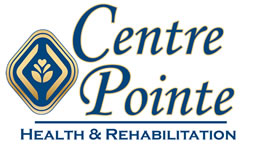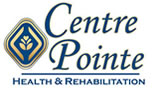When it comes to managing lymphedema, knowing the most effective and advanced treatment options can make a significant difference in your life. If you or a loved one is dealing with this condition, understanding the available therapies is crucial. Let’s walk through some key insights to help you navigate these waters.
Key Takeaways
- Complete Decongestive Therapy (CDT) is a cornerstone of advanced lymphedema management.
- Manual Lymph Drainage (MLD) is a specialized massage technique that helps move lymph fluid.
- Modern compression devices offer more than traditional bandaging, providing consistent pressure to affected areas.
- Exercises tailored for lymphedema can significantly improve lymph flow and reduce symptoms.
- Surgical options like Lymph Node Transfer and Lymphaticovenous Anastomosis are emerging as promising treatments for certain cases of lymphedema.
Understanding Lymphedema
Before diving into the advanced treatment techniques, let’s ensure we have a clear understanding of lymphedema. Simply put, it’s a condition where excess lymph fluid builds up in tissues, causing swelling, typically in the arms or legs. It can result from congenital factors or as a consequence of surgery, radiation therapy, or injury.
What is Lymphedema?
Lymphedema occurs when the lymphatic system doesn’t work properly, whether due to genetic predisposition or damage. It’s important because the lymphatic system is part of your immune system—it helps fight infection and balances fluid levels in your body. When this system fails, fluid collects, leading to swelling and discomfort.
Signs and Symptoms to Watch For
Keep an eye out for these common signs of lymphedema:
- Swelling in part of your body, often in an arm or leg
- A feeling of heaviness or tightness in the affected area
- Restricted range of motion
- Aching or discomfort
- Recurring infections
- Hardening and thickening of the skin
If you notice any of these symptoms, it’s important to consult with a healthcare professional as early intervention can prevent the condition from worsening.
Breaking the Boundaries: Advanced Treatment Techniques
Now, let’s explore the sophisticated treatments that are changing the landscape of lymphedema care.
Complete Decongestive Therapy (CDT): Beyond the Basics
CDT is more than just a treatment; it’s a comprehensive program. It involves meticulous skin care, manual lymph drainage, specialized compression bandaging, and exercise—all tailored to your individual needs. The goal is not only to reduce swelling but also to maintain and improve the results over time.
Here’s what a typical CDT program includes:
- Skin Care: Keeping the skin clean and moisturized to prevent infections.
- Manual Lymph Drainage: A form of gentle massage that encourages the movement of lymph fluids around blocked areas toward healthy lymph vessels.
- Compression: Using bandages or garments to apply pressure to the swollen area to move lymph fluid and prevent further accumulation.
- Exercise: Engaging in specially designed exercises that support lymph fluid circulation without overstraining the affected limb.
It’s crucial to work with a trained lymphedema therapist to get the best results from CDT. They can tailor the program to your specific situation and make adjustments as needed.
Manual Lymph Drainage (MLD) is a pivotal element of CDT. This specialized massage technique is gentle yet effective, encouraging the natural drainage of the lymph, which carries waste products away from the tissues back toward the heart. MLD is performed by trained therapists who use a specific amount of pressure and rhythmic circular movements to stimulate lymph flow.
Compression Devices: When Bandages Alone Aren’t Enough
While bandaging is a traditional approach to providing compression, advancements in technology have given us compression devices that offer a more consistent and controlled pressure. These devices are particularly useful for those who find bandaging cumbersome or who require ongoing maintenance therapy.
These modern devices include advanced lymphedema treatment methods and therapy techniques.
- Adjustable Velcro wraps that allow for a custom fit
- Sequential pneumatic compression pumps that inflate garments to apply pressure in a gradient, mimicking the body’s natural lymph movement
- Custom-fitted compression garments that maintain limb size and shape
Using these devices can significantly enhance the quality of life by providing effective, easy-to-use options for managing lymphedema at home.
Leveraging Technology in Lymphedema Treatment
The Role of Lymphatic Imaging in Tailored Care Plans
For a condition as complex as lymphedema, a one-size-fits-all approach doesn’t work. That’s where lymphatic imaging comes in. It’s a game-changer, allowing healthcare providers to visualize the lymphatic system in detail. This helps in creating personalized treatment plans that target specific problem areas, making therapy more effective.
Pneumatic Compression Pumps: Balancing Science and Comfort
Pneumatic compression pumps are a modern tool that can be used at home. They consist of a sleeve with multiple chambers that fill with air in sequence, gently squeezing the affected limb. This mimics the natural pumping of the lymphatic system, helping to reduce swelling. The beauty of these devices lies in their balance of scientific effectiveness with user comfort and convenience.
Laser Therapy: A Ray of Hope for Lymphedema Sufferers
Laser therapy is an emerging treatment that’s showing promise. Low-level lasers are used to stimulate the affected tissues, which can reduce pain and inflammation, and promote healing. It’s a non-invasive option that, when used alongside other therapies, can lead to improved outcomes for patients with lymphedema.
Exercises and Self-Care: The Power in Your Hands
Exercise is a powerful tool in the management of lymphedema. When done correctly, it can help pump lymph fluid out of your swollen limb and improve overall fluid movement throughout your body. It’s important to start slowly and increase the intensity of your workouts gradually, always under the guidance of a lymphedema therapist.
Targeted Exercise Routines for Enhancing Lymph Flow
Targeted exercises designed for lymphedema patients focus on gentle contractions of the muscles in the affected limb. These can include:
- Range-of-motion exercises to keep the joints flexible
- Strength training with light weights to encourage lymph flow without overexertion
- Aerobic exercises like walking or swimming that involve the whole body
Remember, the key is to be consistent with these exercises as they play a crucial role in managing your lymphedema.
Self-Care Strategies for Maintaining Reductions in Swelling
Beyond exercises, self-care is an essential part of managing lymphedema. This includes:
- Maintaining good skin care to prevent infections
- Practicing meticulous hygiene
- Being mindful of changes in the size of your limb and addressing them promptly
These strategies empower you to take control of your lymphedema and maintain the progress you’ve made in therapy.
Surgical Advances: A New Horizon
Surgery is often considered when conservative treatments haven’t achieved the desired results. Thanks to advances in medical science, there are now surgical options that can offer hope to those with severe lymphedema.
Lymph Node Transfer: Pioneering Surgical Intervention
Lymph node transfer is a microsurgery where healthy lymph nodes are transplanted to the affected area to restore lymphatic function. It’s a complex procedure that requires a skilled surgical team, but for some patients, it can significantly reduce the severity of lymphedema.
Lymphaticovenous Anastomosis: High-tech Surgery for Lymphatic Repair
Lymphaticovenous anastomosis is another advanced surgical technique. In this procedure, surgeons connect the affected lymphatic vessels directly to small veins, allowing the lymph fluid to drain into the venous system. This can alleviate swelling and improve the quality of life for patients with lymphedema.
Integrating Holistic Approaches with Modern Medicine
While advanced medical treatments are critical in managing lymphedema, integrating holistic approaches can enhance overall well-being and support the effectiveness of traditional therapies. Holistic care focuses on the whole person—body, mind, and spirit—and can be tailored to complement the medical treatments you may be receiving for lymphedema.
Diet and Nutrition: Fueling Your Body for Healing
Good nutrition is essential for everyone, but if you’re dealing with lymphedema, it becomes even more important. A balanced diet rich in anti-inflammatory foods can help manage symptoms. Focus on:
- Lean proteins to repair tissues
- Fruits and vegetables for vitamins and antioxidants
- Whole grains for fiber
- Plenty of water to stay hydrated and help the lymphatic system function properly
Avoiding processed foods, excess salt, and sugar can also help reduce inflammation and swelling.
Mind-Body Practices to Complement Physical Therapies
Stress can exacerbate lymphedema symptoms, so incorporating mind-body practices like yoga, meditation, and deep breathing exercises can be incredibly beneficial. These practices help you relax, reduce stress, and improve your body’s natural healing processes. They also encourage mindfulness, which can help you become more attuned to your body’s needs and responses to treatment.
Now, let’s address some common questions you might have about lymphedema and its treatments.
FAQs
What is the most effective treatment for lymphedema?
The most effective treatment for lymphedema is typically a combination of therapies known as Complete Decongestive Therapy (CDT), which includes manual lymph drainage, compression, skin care, and exercise. Each person’s treatment may vary based on the severity and cause of their lymphedema.
Can lymphedema be completely cured?
Currently, there is no cure for lymphedema. However, with proper management, including the advanced treatment methods discussed, individuals can significantly reduce their symptoms and maintain a high quality of life.
How do compression devices aid in lymphedema treatment?
Compression devices help maintain the reduction in swelling achieved by manual lymph drainage and bandaging. They provide a consistent pressure that supports the flow of lymph fluid and can be an essential part of home-based maintenance therapy.
Are there home-based treatments for lymphedema?
Yes, there are several home-based treatments for lymphedema, including self-manual lymph drainage, wearing compression garments, and performing lymphedema-specific exercises. Pneumatic compression pumps can also be used at home to manage symptoms.
What are the risks of surgery for lymphedema?
Surgical treatments for lymphedema, such as lymph node transfer and lymphaticovenous anastomosis, carry the usual risks associated with surgery, such as infection and complications from anesthesia. Additionally, there is no guarantee of success, and there may be a long recovery period. These options are generally considered when conservative treatments have been exhausted.

